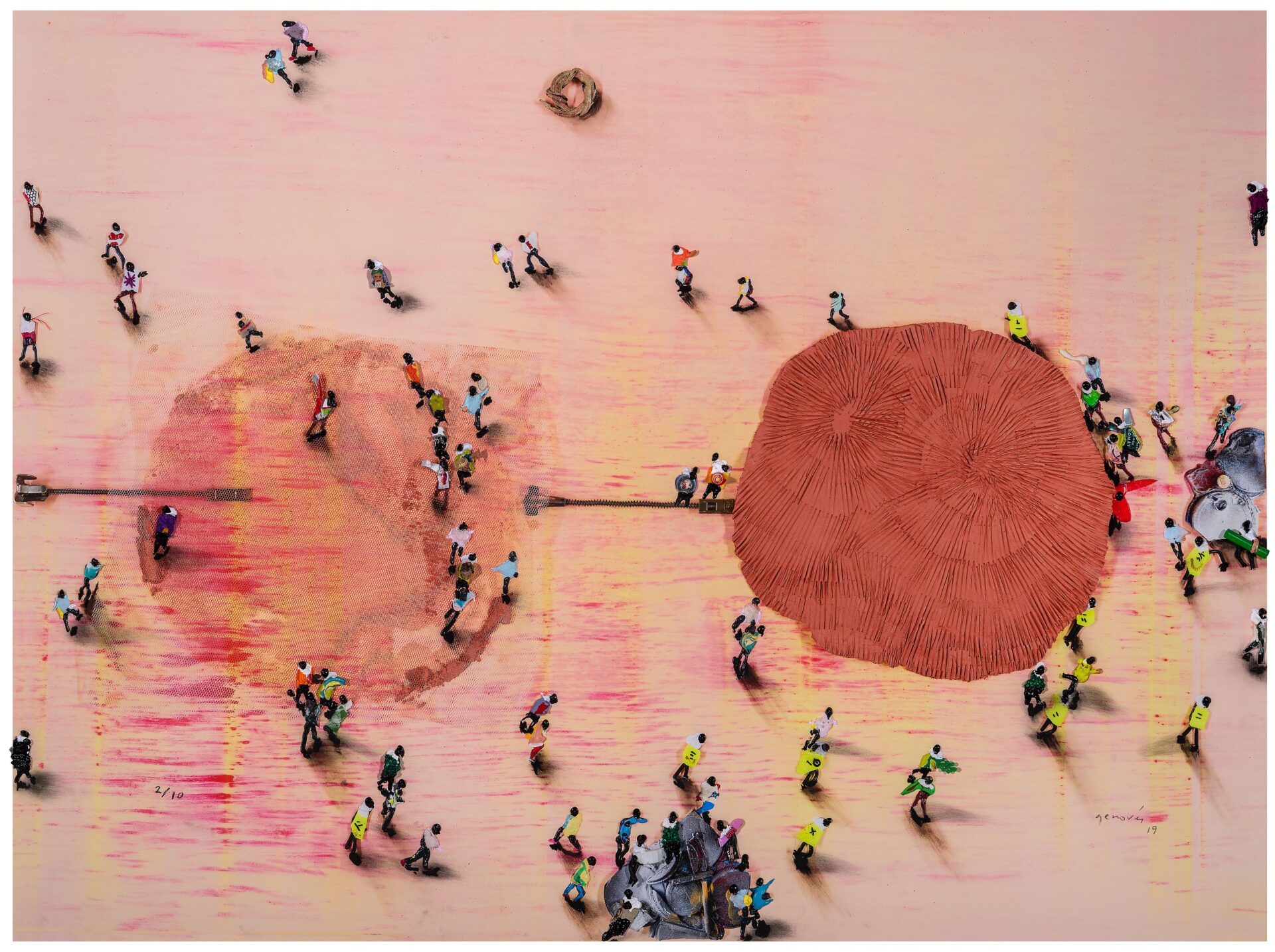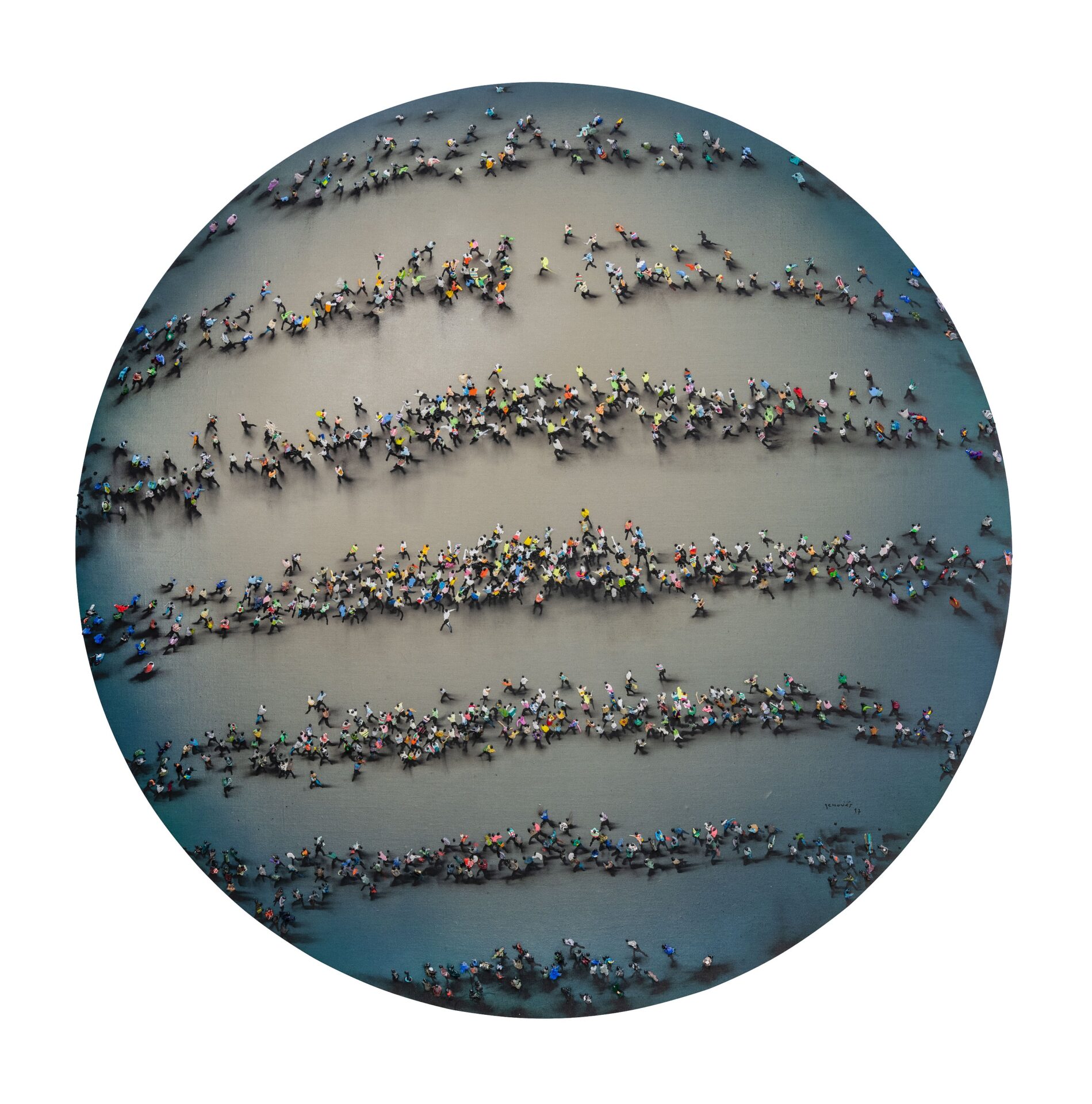Crowds have almost always taken centre stage in Juan Genovés’s work. A swarm of human figures that wander through his paintings, either fleeing from something, such as Franco’s police, in works that immediately became a symbol of the anti-Franco struggle, or in search of others like them, such as his famous embrace, which came to be the emblem of the reconciliation that took place during the Transition in Spain.
Genovés, a Valencian painter who trained at the San Carlos School of Fine Art in Valencia, became a member of several very active groups of artists after the post-war period in Spain, such as Los Siete (1949), Parpalló (1956) and Hondo (1960), until he found his own voice amid this art scene. The year 1966 was a turning point in his career, as he won an honourable mention at the 33rd Venice Biennale. This brought his work to the attention of Frank Lloyd, founder of the Marlborough Gallery in London, who invited him to work with what at that time was one of the most internationally prestigious galleries, with artists such as Francis Bacon, Lucian Freud, Mark Rothko and Henry Moore on its books. Although his commitment to the anti-Franco struggle always led him to stay in Spain, his work began to enjoy greater international visibility.
That work, characterised by crowds, underwent a change in the final stage of his career, when the human figures began to present a wide colour palette and the painting grew in terms of matter, increasing in relief and almost turning into a little sculptural object. While Fontana sought the third dimension through the empty space of the incisions he made on the canvas, Genovés reached it by adding matter to those small individuals.
At the same time, the backgrounds of his paintings, grey and dark up till then, opened up to a wide range of colours, with a predominance of ochre and beige. Where viewers had previously seen political opponents, they could now recognise African emigrants knocking at Europe’s door dressed in their colourful outfits. It was a new style, which represented a development in his long record of social commitment and at the same time attracted enormous international recognition, as it aroused the interest of collectors in many countries.
Hortensia Herrero and Juan Genovés maintained a close personal relationship which resulted in the acquisition of a wide range of his works for her collection. She always considered him one of her favourite Valencian artists.

